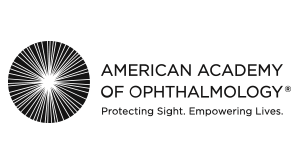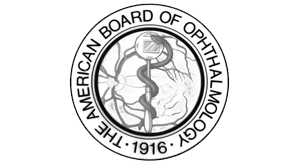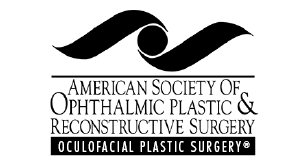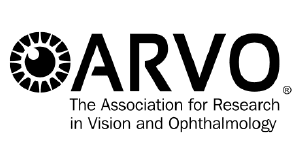Thyroid Eye Disease Treatment and Non-Surgical Management


Thyroid eye disease treatment and non-surgical management is focused on the active, initial inflammatory phase of the disease. The primary goal of active phase non-surgical treatment is to control inflammation and protect the eyes from short-term and long-term damage.
Treatment options and choices depend on the disease progression and severity – each dependent on individual patient factors. With early intervention with appropriate non-surgical treatments, long-term outcomes can be significantly improved.
The active phase of thyroid eye disease – the initial inflammatory phase which can last from a few months to as many as three years. Recognizing the initial progression of this disease, and responding with appropriate treatment, can significantly reduce the potential damage caused by thyroid eye disease, including protecting vision loss, vision issues like double vision, and corneal damage.
Treatment in the active, inflammatory phase of thyroid eye disease can reduce symptoms and slow the progression of the disease. Seeking treatment early can play an instrumental role in controlling the disease and optimizing optimal outcomes.
Medical interventions form the cornerstone of non-surgical management for thyroid eye disease, especially during the active inflammatory phase – with the goal of reducing inflammation, protecting the eyes, and preventing disease progression with a combination of systematic and local treatment approaches.
Systemic medications target the underlying inflammatory issues caused primarily by thyroid and thyroid hormone disfunction. There are number of medications available to thyroid eye disease patients, each of which require careful monitoring and adjustment based on individual response and potential side effects.
In some cases, acute swelling causing double vision or loss of vision may be treated for a limited time with oral prednisone. However, prednisone given for more than a few weeks at the dosages required to suppress the autoimmune inflammation often causes bothersome and dangerous side-effects that may become severe.
In patients who respond to prednisone, a short course of intravenous (IV) steroids (methylprednisolone) may provide symptomatic improvement with fewer side effects than oral prednisone; this is referred to as an IV steroid pulse.
A newly FDA-approved drug, teprotumumab (Tepezza®), has been shown to be effective in the majority of patients with active thyroid eye disease. (Patients who experience eye redness, pain with eye movement, worsening proptosis, and/or worsening diplopia.) Teprotumumab can be expensive, and requires insurance pre-authorization, but is a very good option for some patients.
Selenium supplementation is a supportive treatment for thyroid conditions. A trace mineral, selenium has shown promise in helping to regulate thyroid hormones and improve immune function. A daily recommended dose of selenium may help reduce inflammation and improve mild eye symptoms associated with TED. Its antioxidant properties appear to help protect orbital tissues and may slow disease progression.
Local treatments provide immediate relief and protection for the ocular surface, serving as an important component of daily eye care. These interventions help maintain comfort and prevent complications while systemic treatments take effect.
Most patients experience relief from dry eyes by using artificial tears throughout the day and gels or ointments at night. Some patients also use eye covers at night or tape their eyes shut to keep them from becoming dry if the eyelids do not close properly. Dryness occurs because the lids are retracted and cannot blink properly, because the tear-producing glands have been affected by the autoimmune process and aren’t functioning well, and/or because the forward bulging of the eyes prevents them from being completely covered by the lids.
Figure: Thyroid Eye Disease (TED) presents in two distinct patterns on imaging. The left image shows proptosis caused by expanded orbital fat tissue, appearing as dark regions surrounding the eye muscles. The right image demonstrates proptosis resulting from enlarged, thickened extraocular muscles themselves.
Changes in day-to-day habits and your environment can help make managing symptoms and preventing complications. Even small modifications can positively impact treatment success and quality of life. Patients who consistently implement recommended lifestyle changes have more positive outcomes and experience fewer complications.
It is very important to stop smoking in order to reduce the severity and duration of thyroid eye disease.
Specific behavioral changes can help reduce symptoms and prevent disease progression, while creating a foundation for successful treatment. These fundamental adjustments often determine how well other treatments work.
Creating an eye-friendly environment can positively affect eye comfort and function. Education on how environmental conditions impact eye symptoms helps patients better control their condition symptoms. The right changes to your environment can significantly reduce daily discomfort and prevent symptom flare-ups.
Ongoing evaluation and documentation are essential for tracking progression of symptoms and treatment effectiveness. Proper monitoring helps guide treatment decisions and timing of interventions. Consistent assessment allows doctors and healthcare team to adjust treatments proactively.
Regular visits and evaluations with your doctor and healthcare team is essential to tracking and managing the disease progression and treatment response. Regular evaluation schedules must be maintained even when symptoms appear stable to catch any changes early.
Careful recording of changes helps guide treatment decisions and provides important data about your disease progression over time. Thorough documentation creates a clear picture of how the condition changes with treatment.
Once the disease achieves remission – ocular conditions of the active phase and thyroid hormone levels have stabilized – treatment can focus on restoring function and correcting persistent unacceptable changes.
Treatment at this point is typically surgical, and needs to proceed in a predetermined order: orbital surgery first to correct the proptosis (orbital decompression), followed by eye muscle surgery to correct the diplopia, followed by eyelid surgery to improve eyelid closure and corneal protection.
At Kahana Oculoplastic and Orbital Surgery, we specialize in advanced surgical and therapeutic solutions for thyroid eye disease. Our dedicated team combines expertise with innovative treatments to provide optimal outcomes for our patients with passion and care.
The extent of surgical rehabilitation is customized and patient-specific. Coordination and proper sequencing of surgical intervention is key to promoting good outcomes
Patients who suffer from auto-immune inflammatory conditions, such as Graves disease, lupus, sarcoidosis, etc., need to be very cognizant about what they put into their bodies.
Dr. Alon Kahana is an internationally recognized authority in orbital and ophthalmic plastic surgery, with a career-long dedication to treating thyroid eye disease. His research has focused on exploring the fundamental molecular mechanisms of this complicated condition, advancing new cutting-edge treatment approaches for the diease.
At Kahana Oculoplastic and Orbital Surgery, our commitment to exceptional patient care goes far beyond the operating room.
Our team provides comprehensive support through each stage of treatment, from initial consultation through recovery. We stay at the forefront of innovation by offering patients access to cutting-edge clinical trials for new thyroid eye disease therapies. Additionally, we encourage a supportive community through regular educational forums, bringing together patients and families to share information, experiences, learning, and support in their journey with thyroid eye disease.
Dr. Spadaro explains the timeline of clinical research, Teprotumumab (Tepezza®) development, and current clinical trials for thyroid eye disease.
The team at Kahana Oculoplastic Surgery specializes in the treatment and management of thyroid eye disease.







